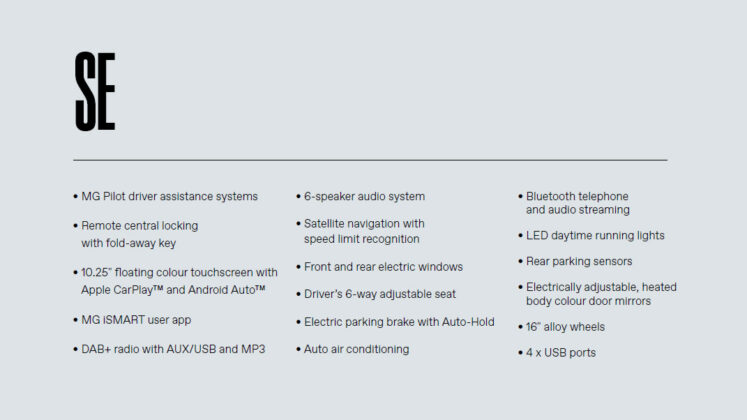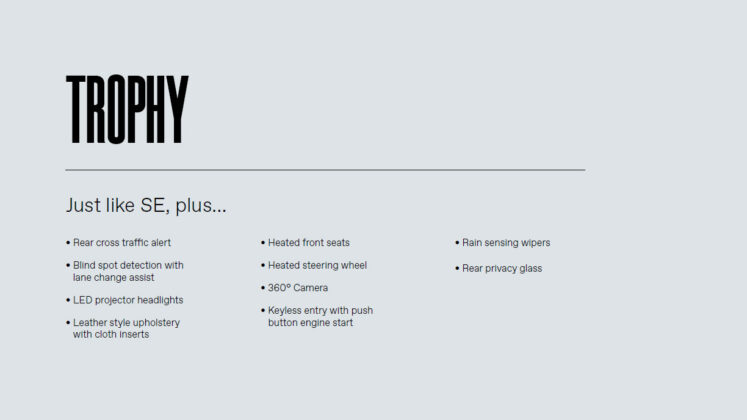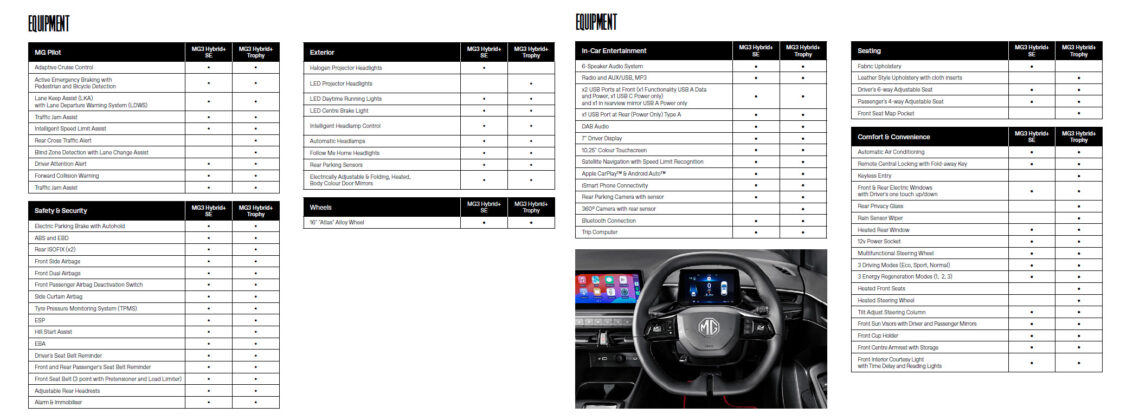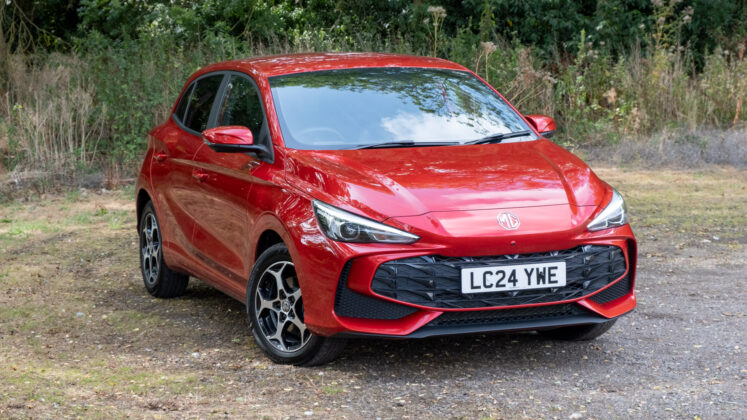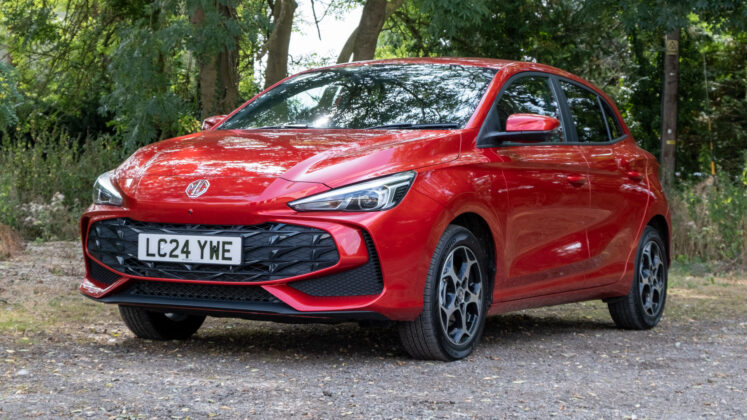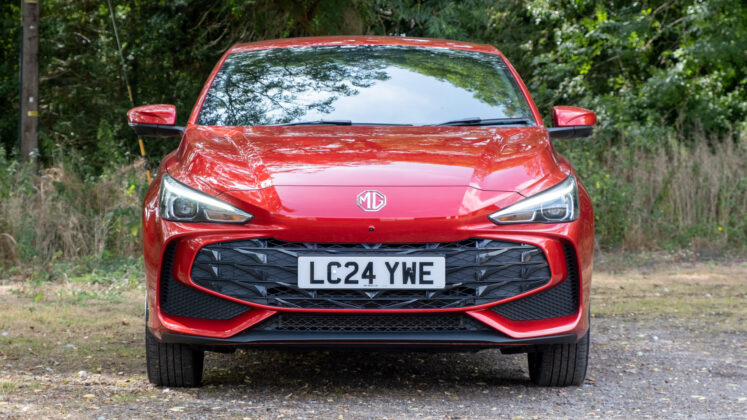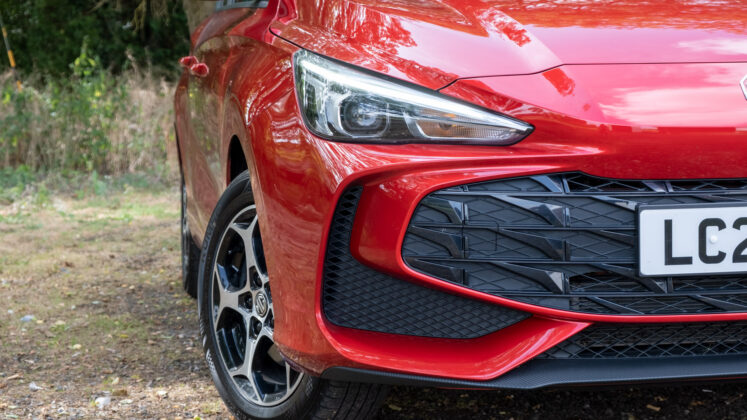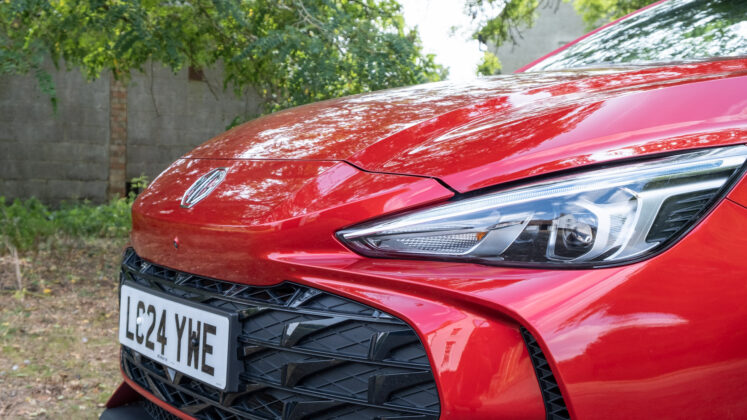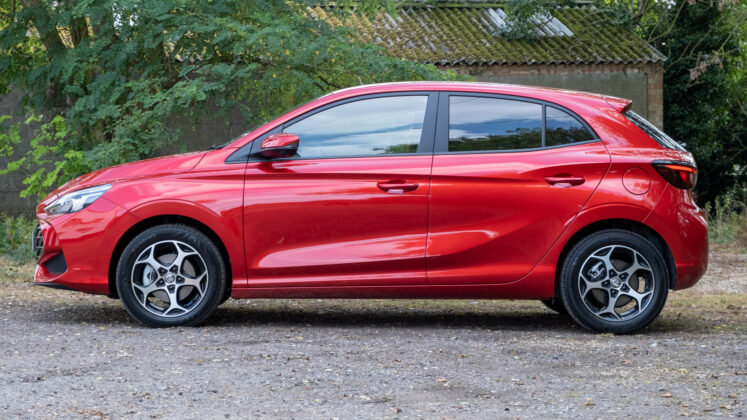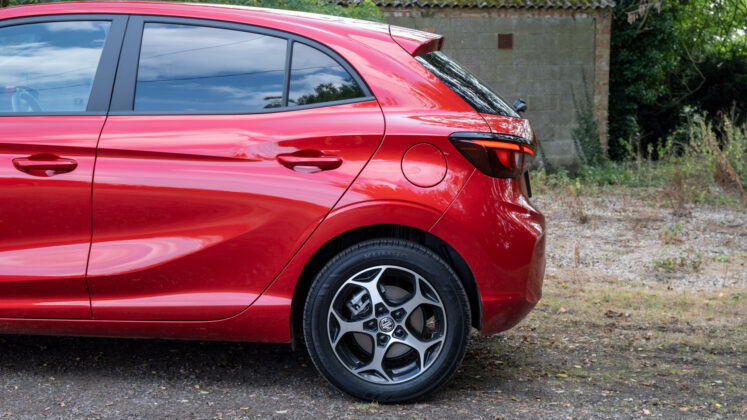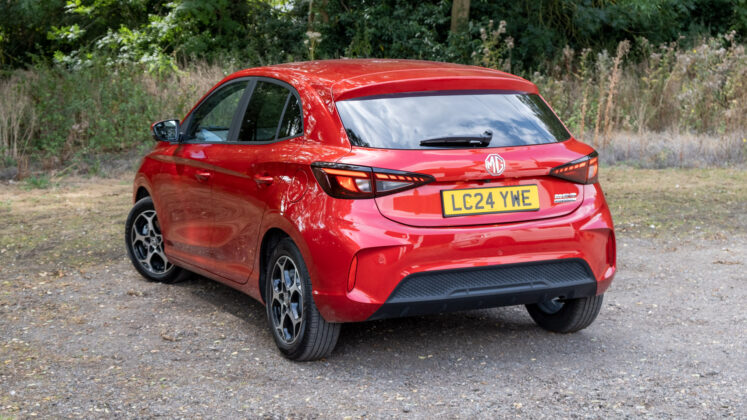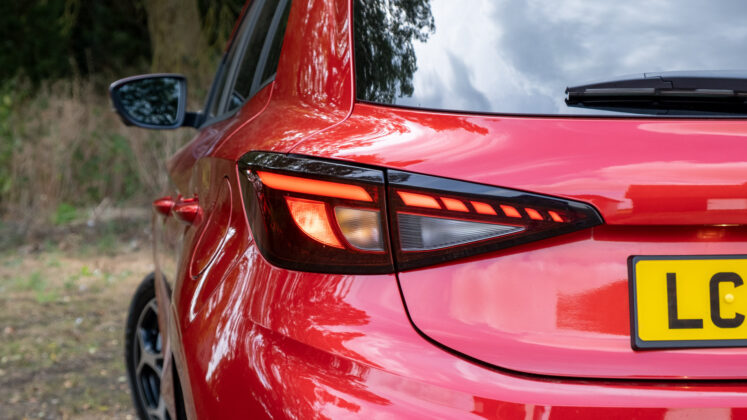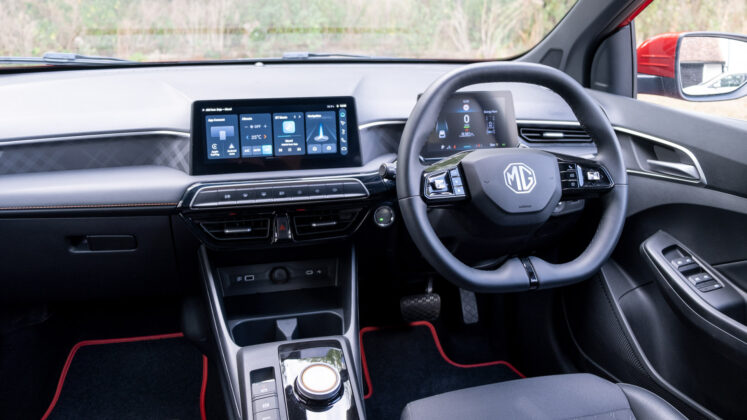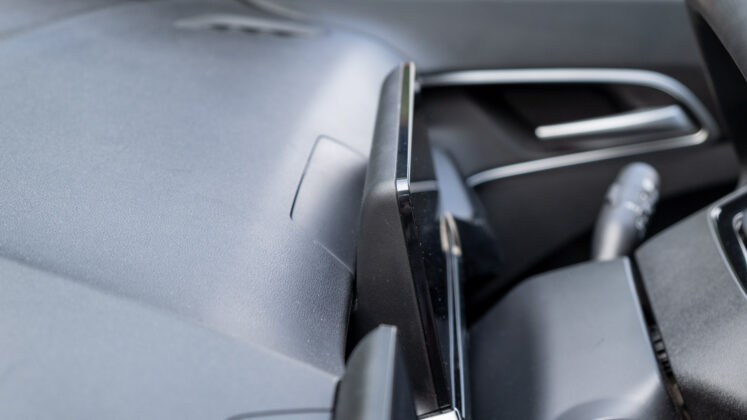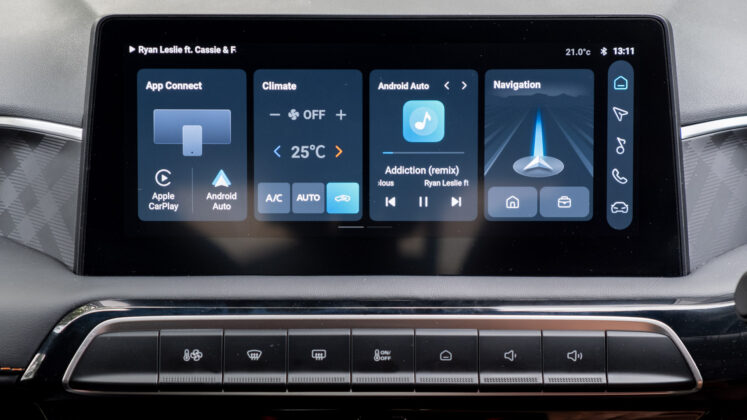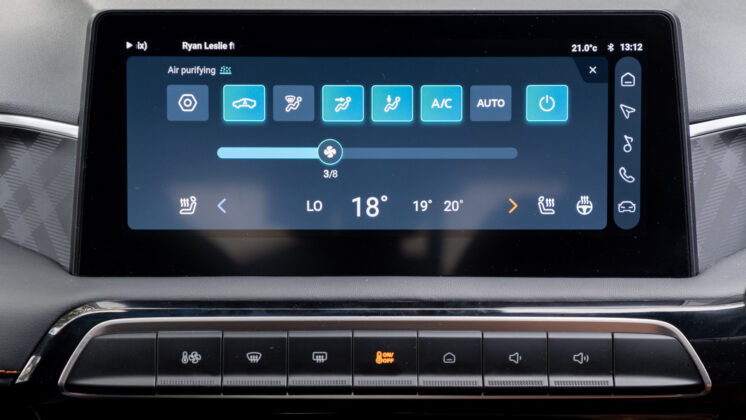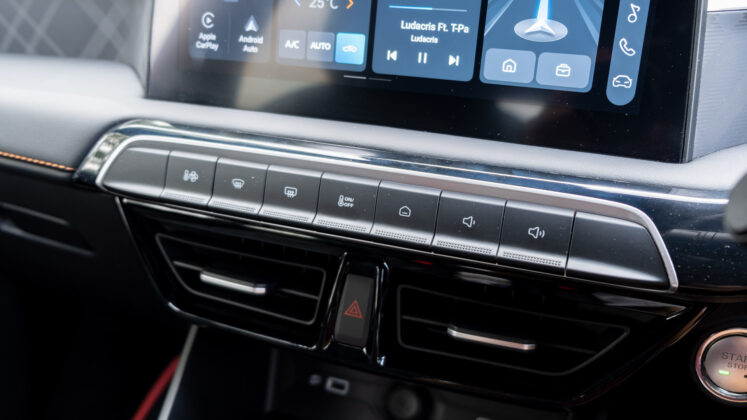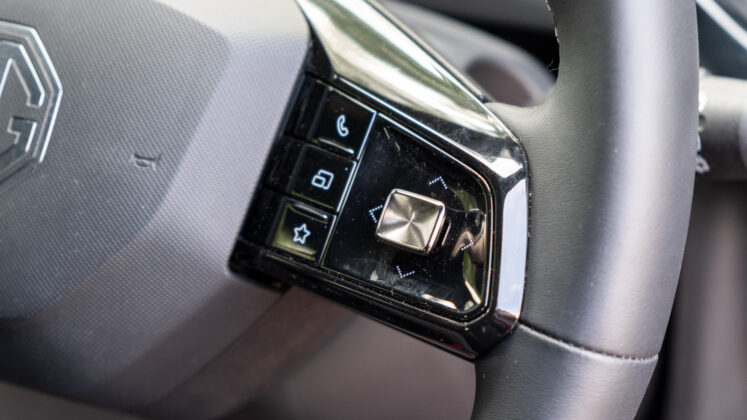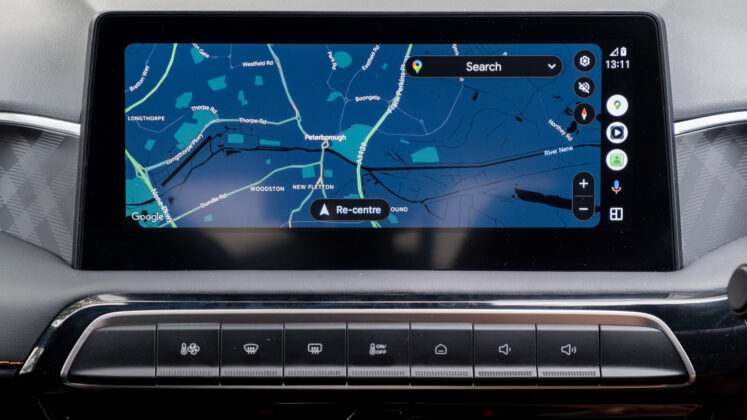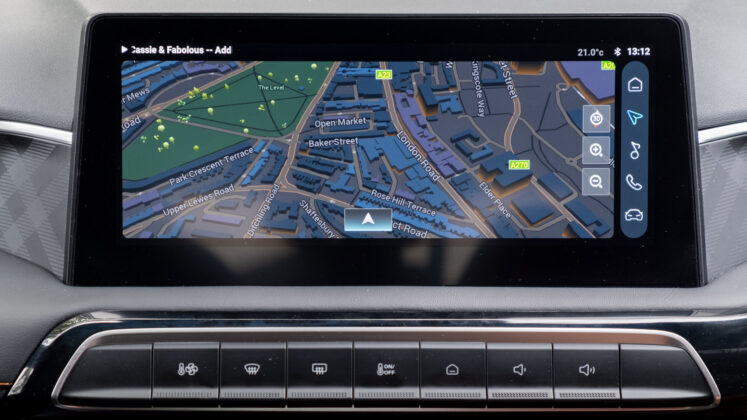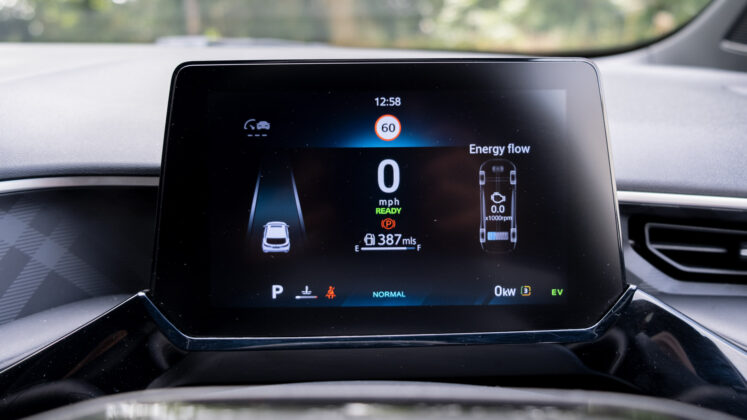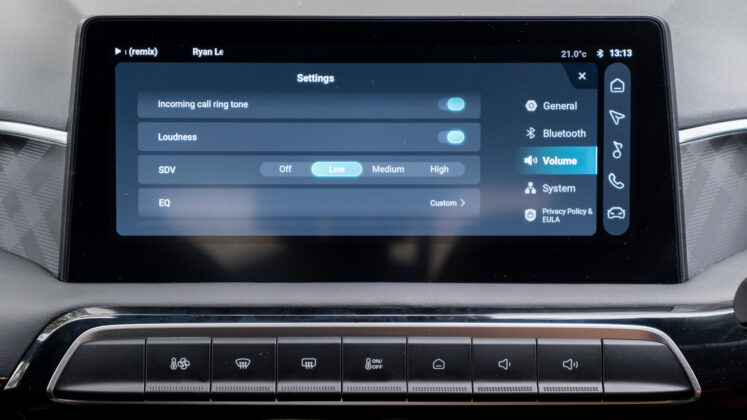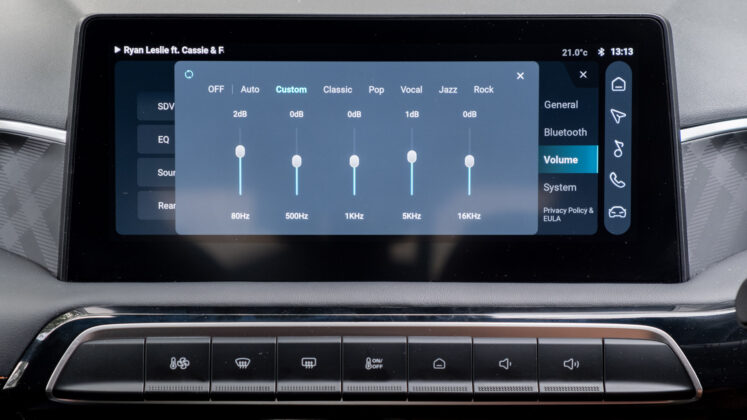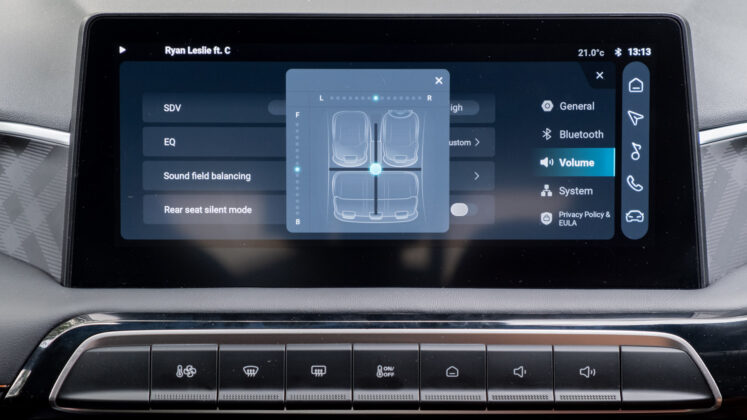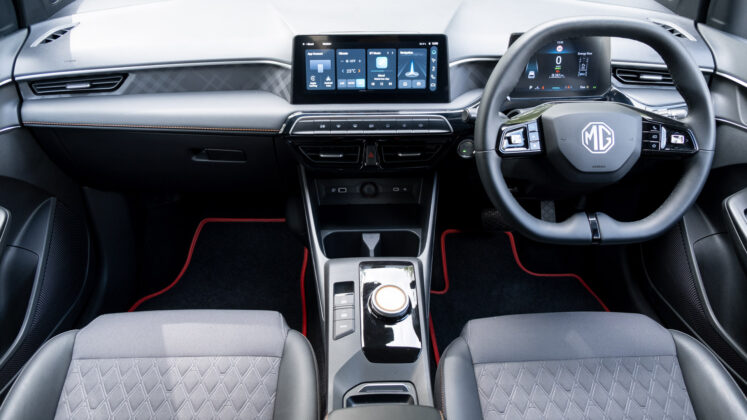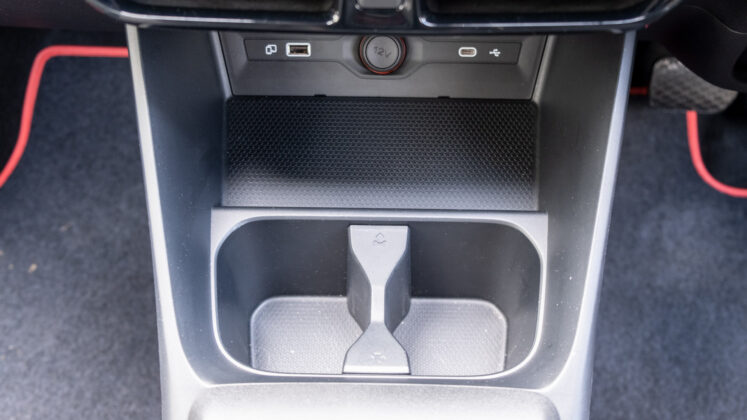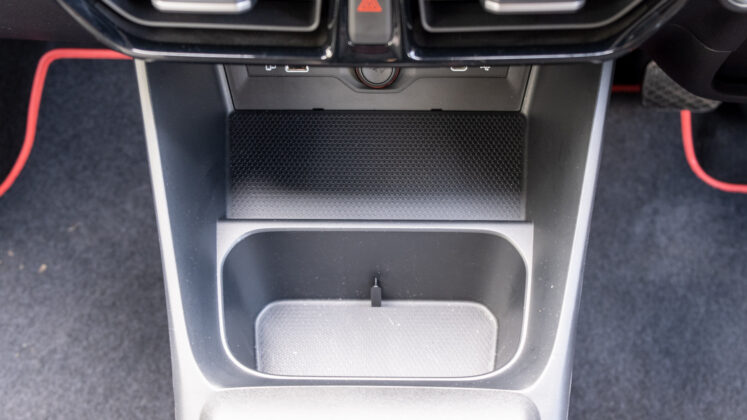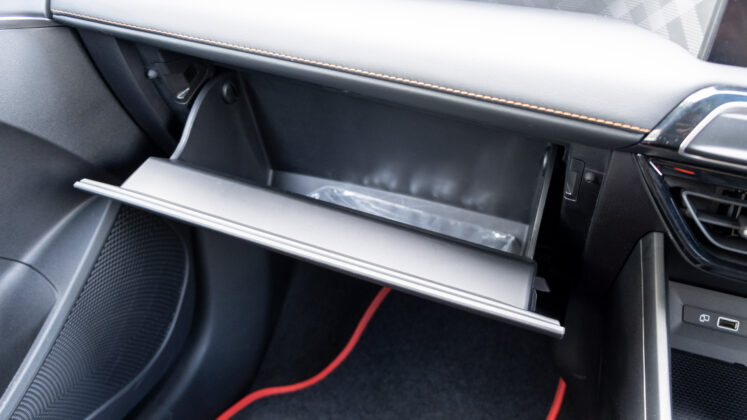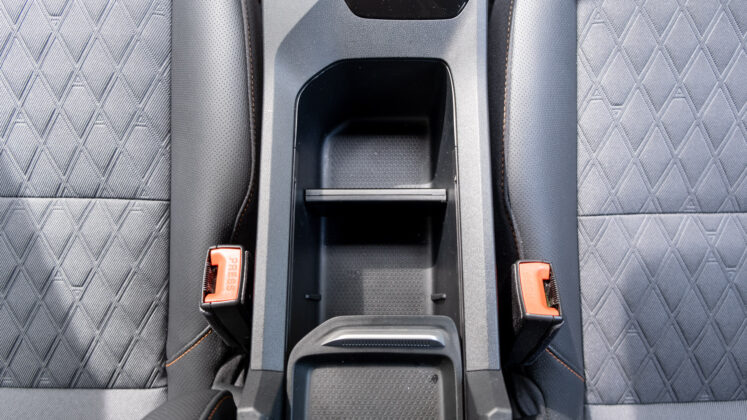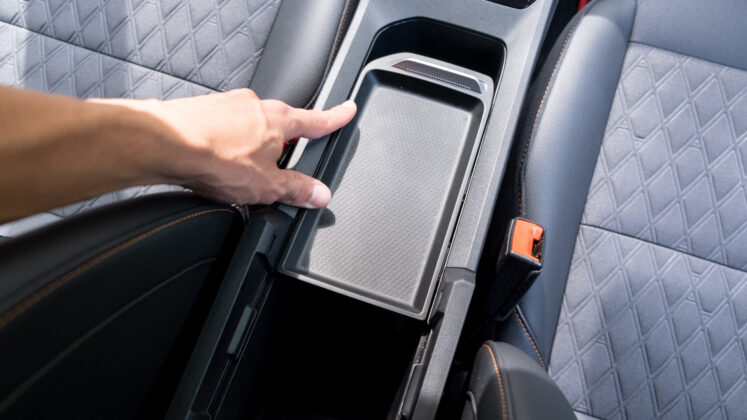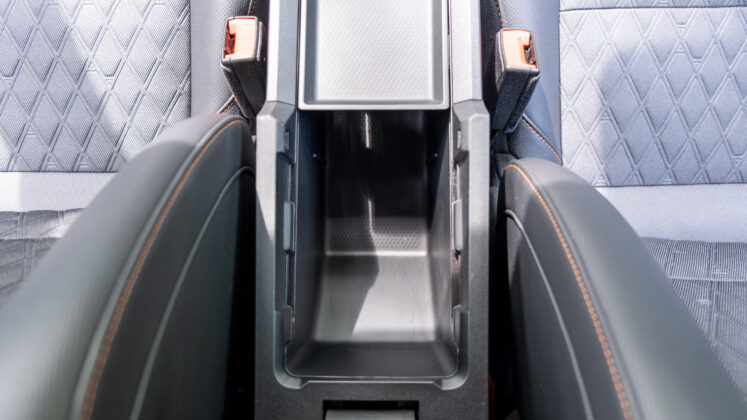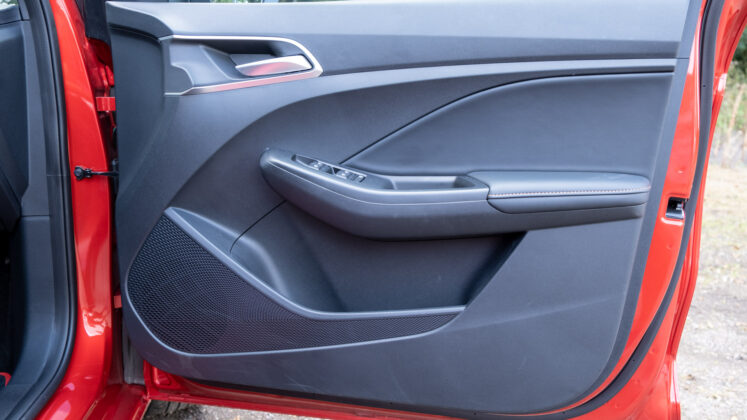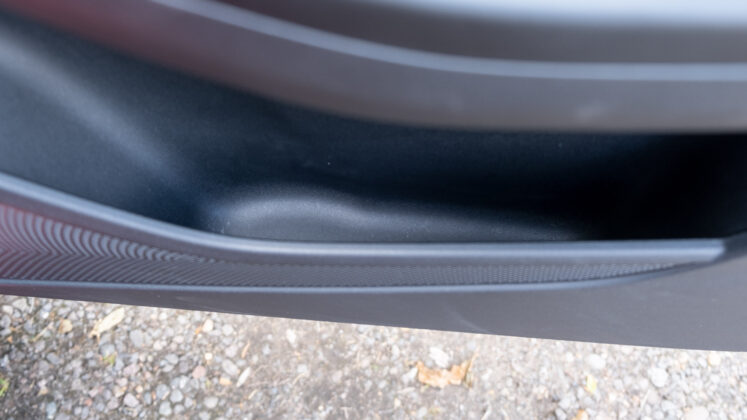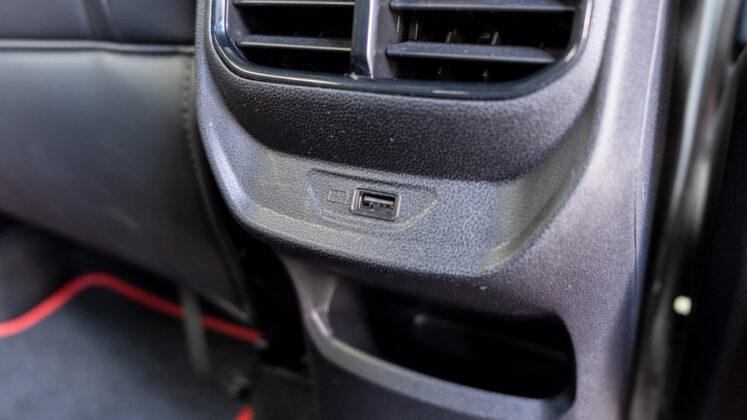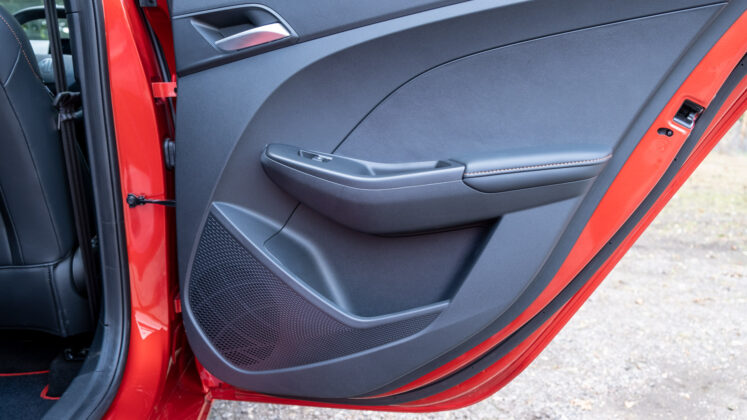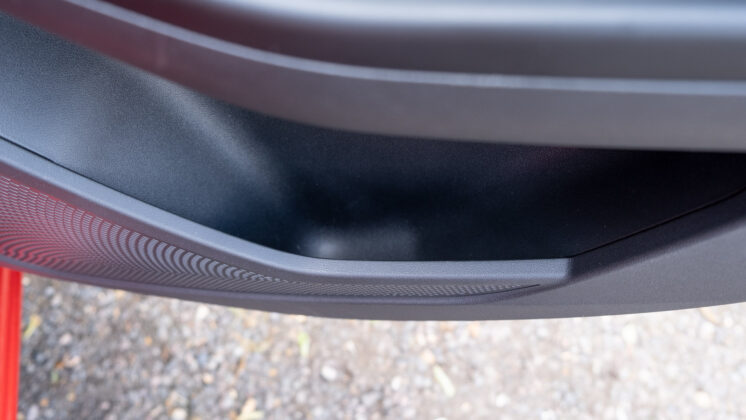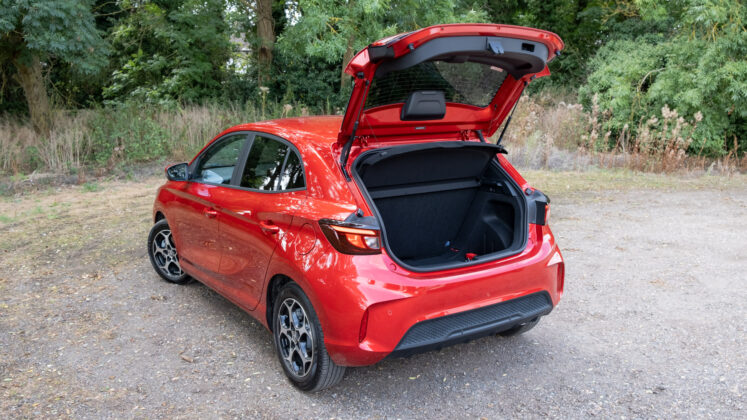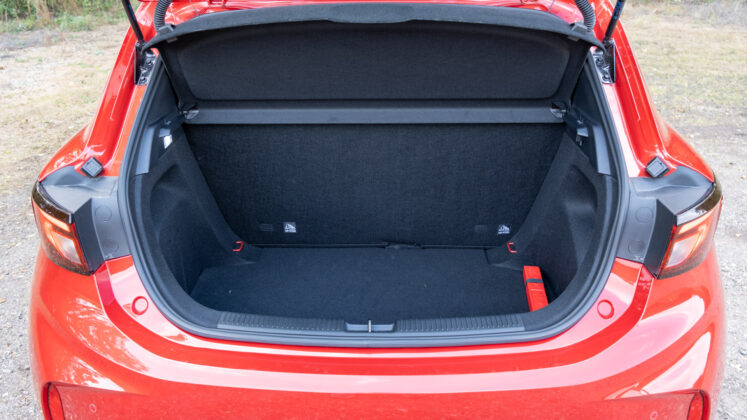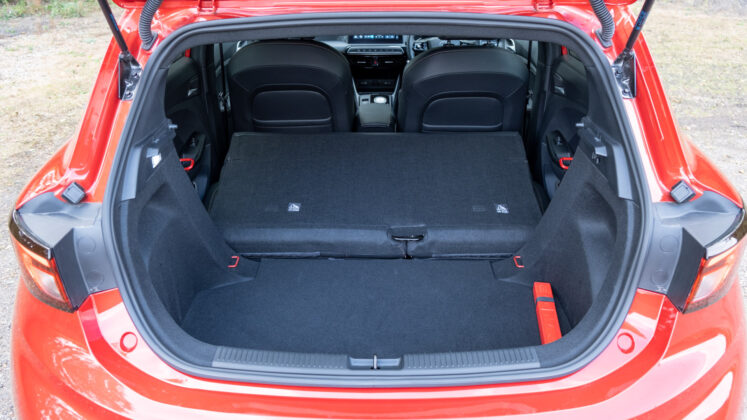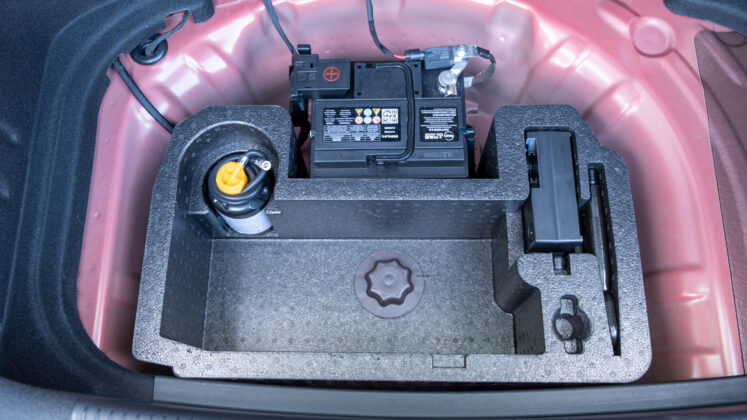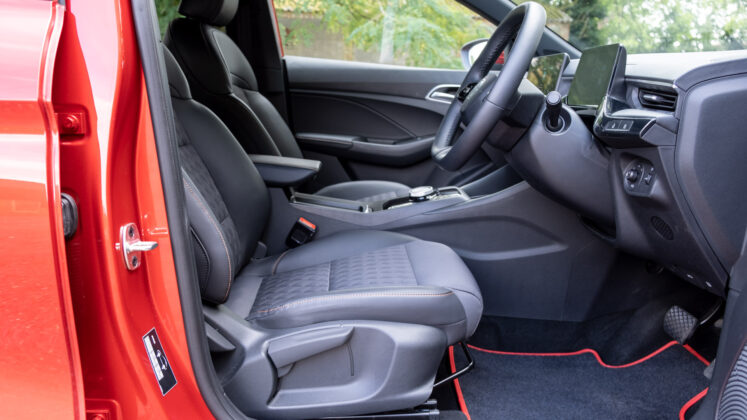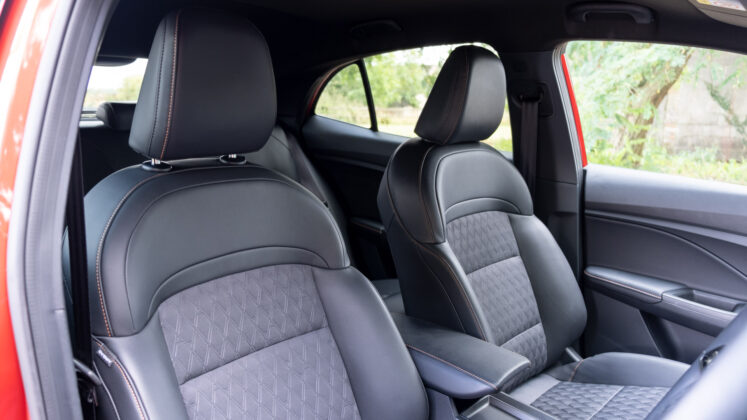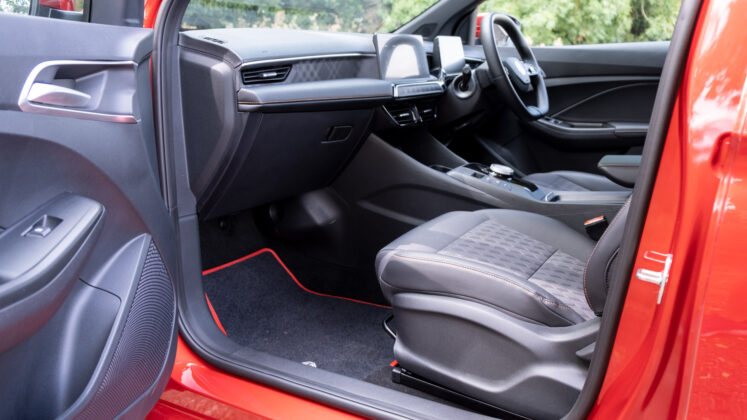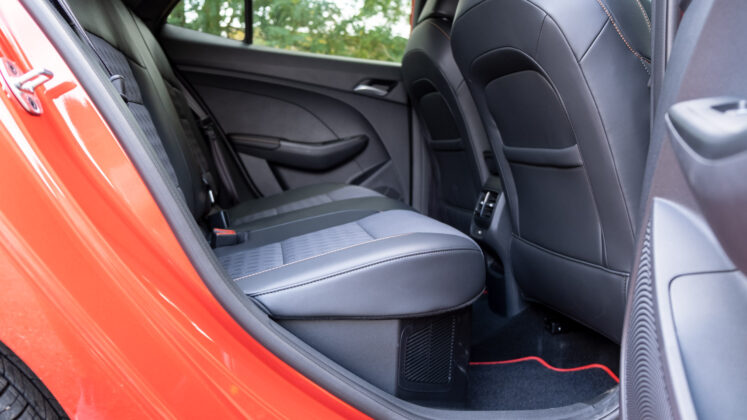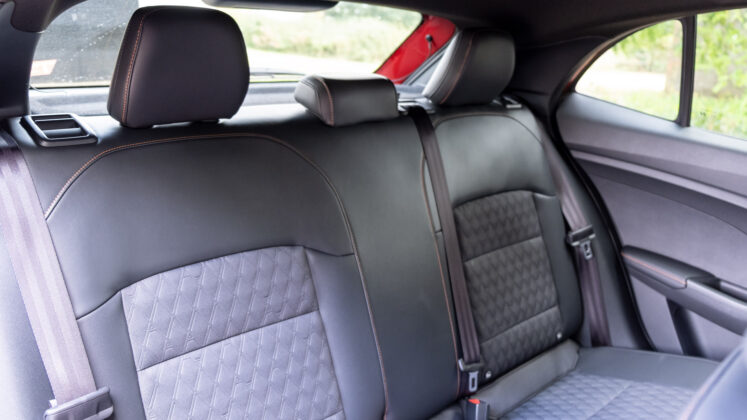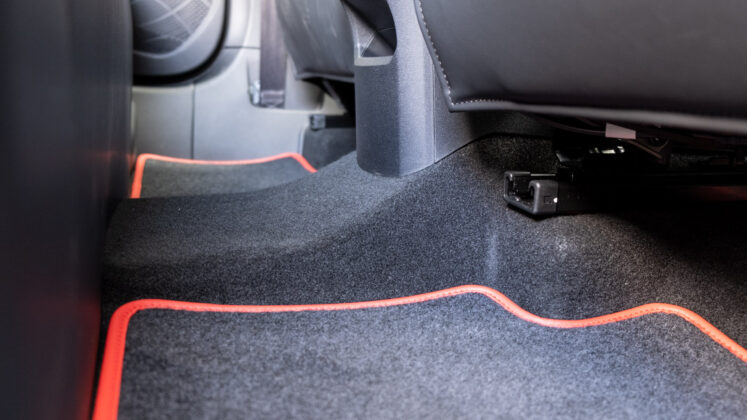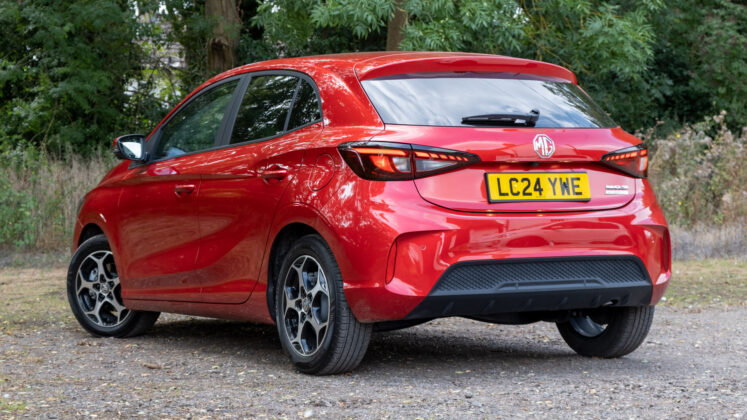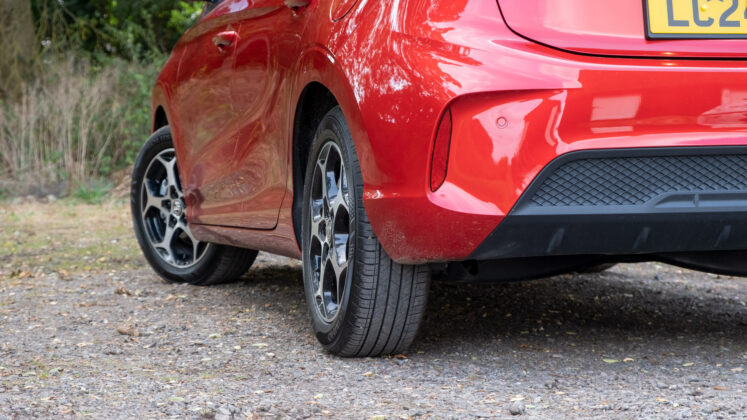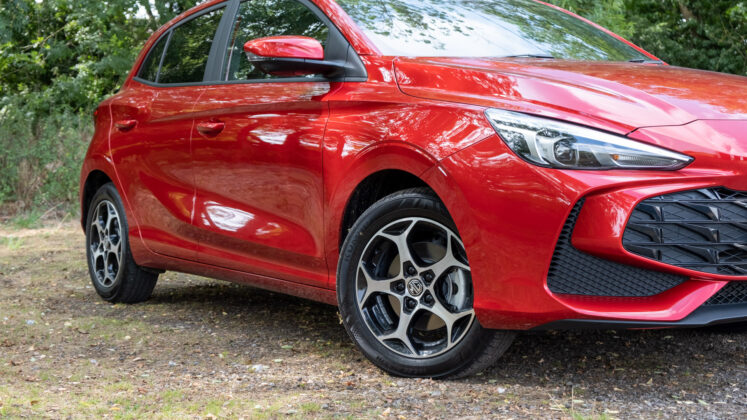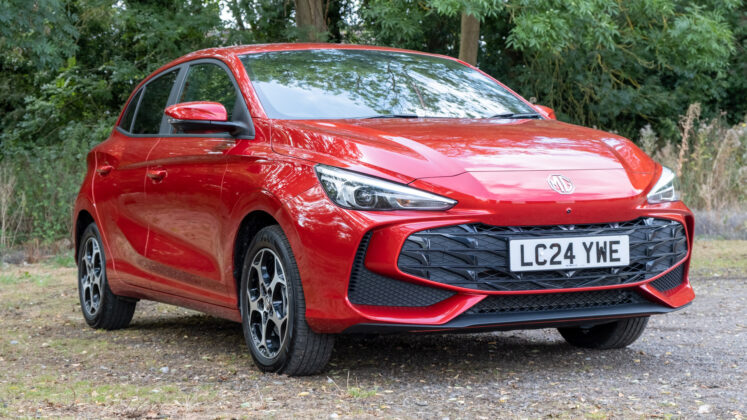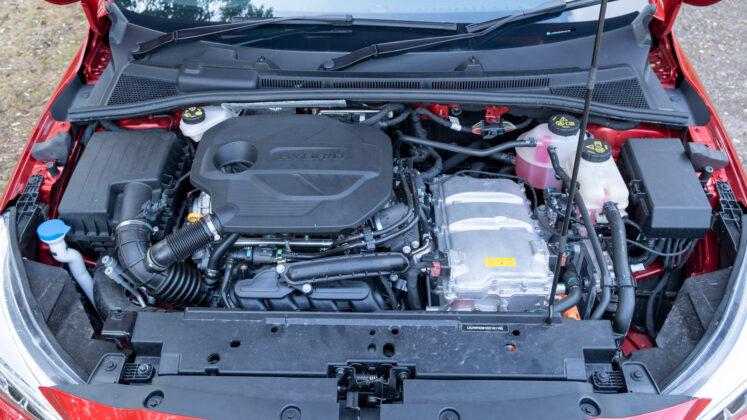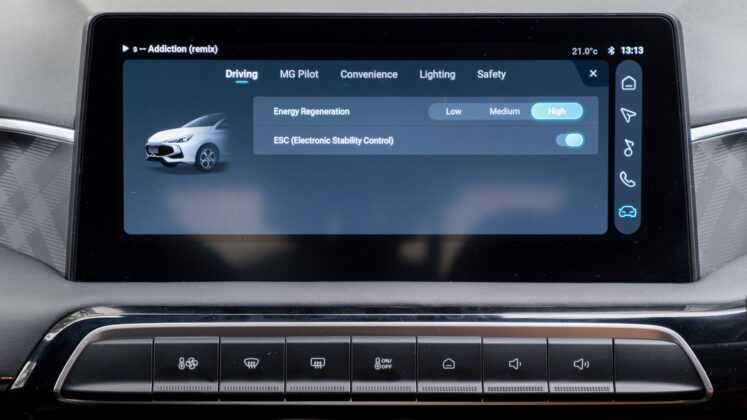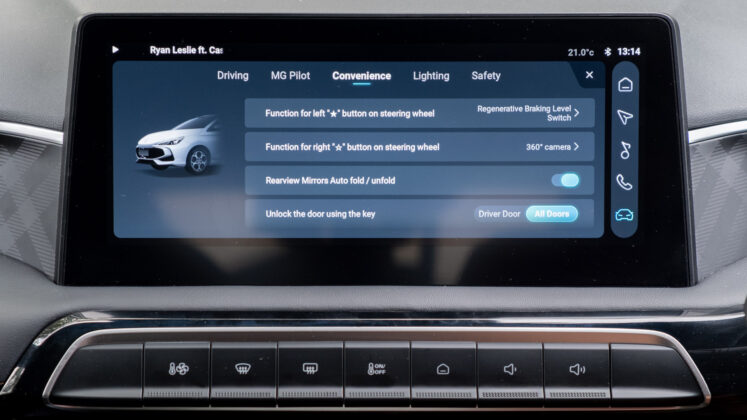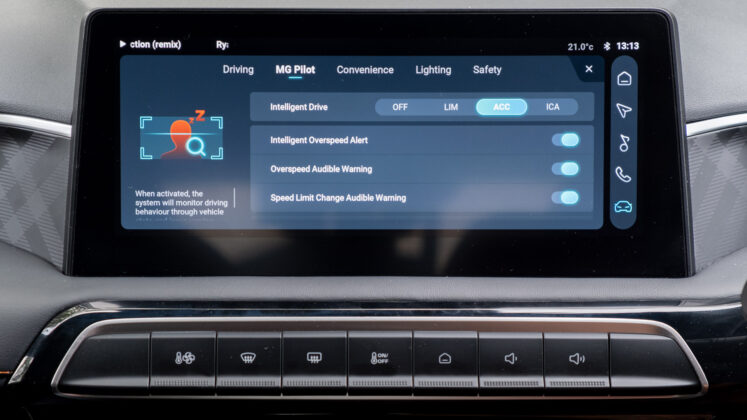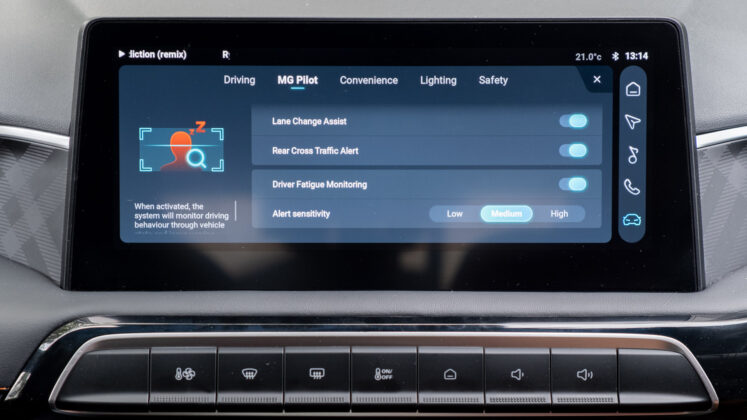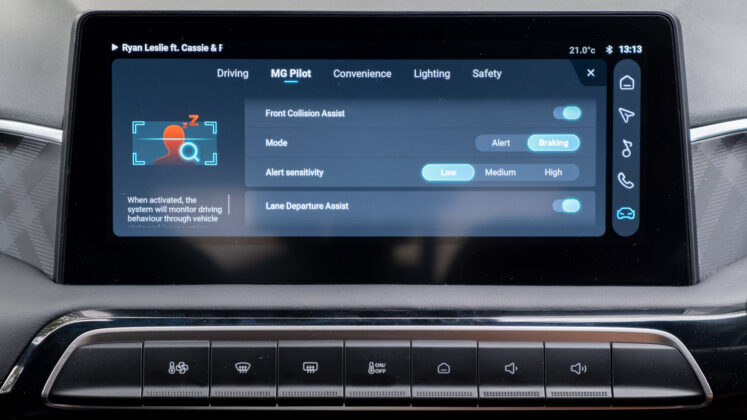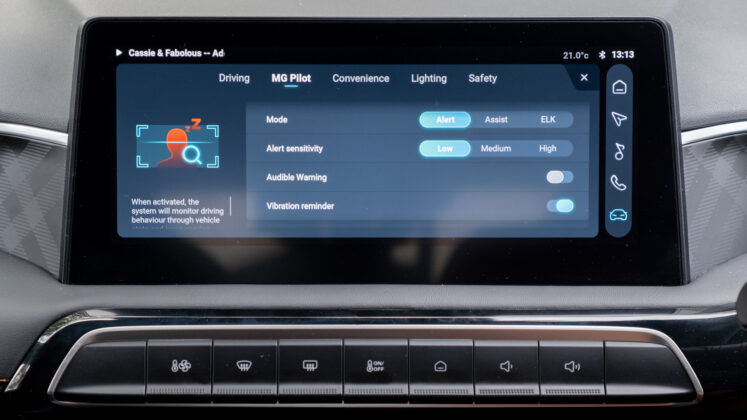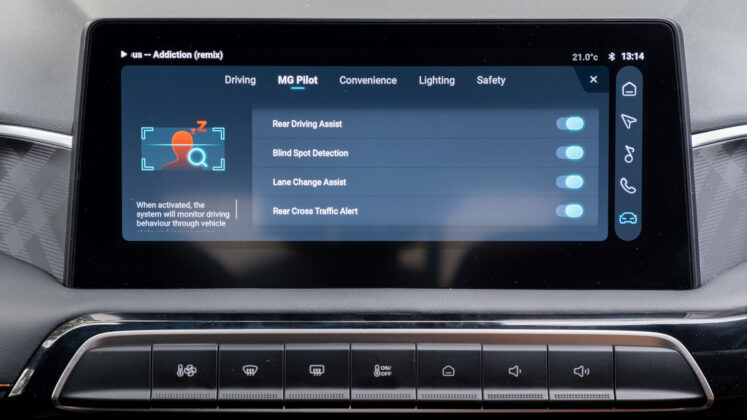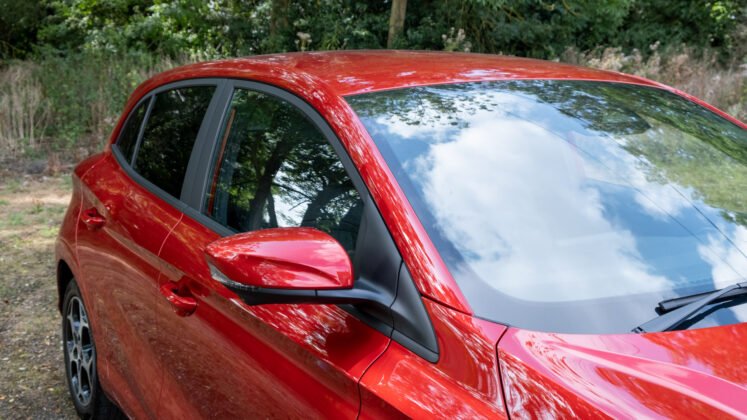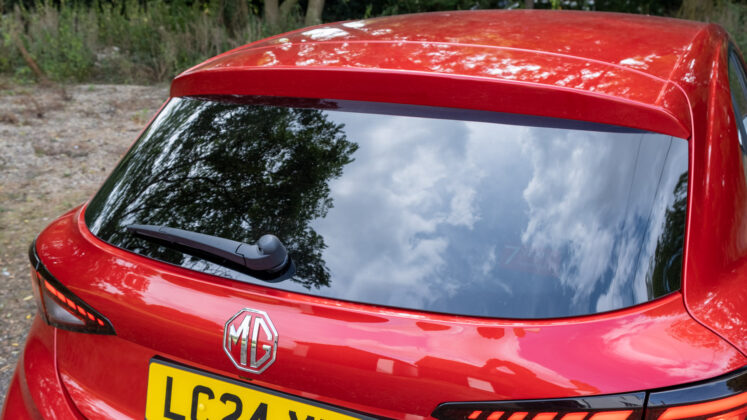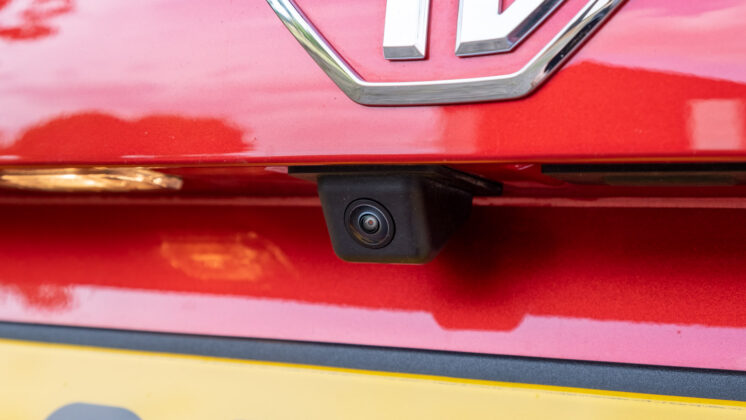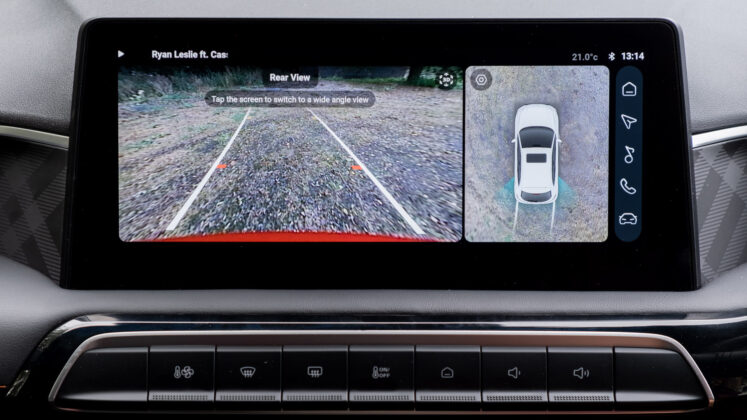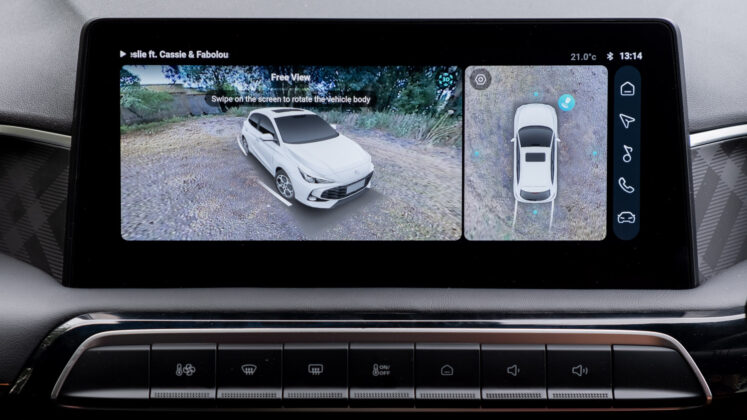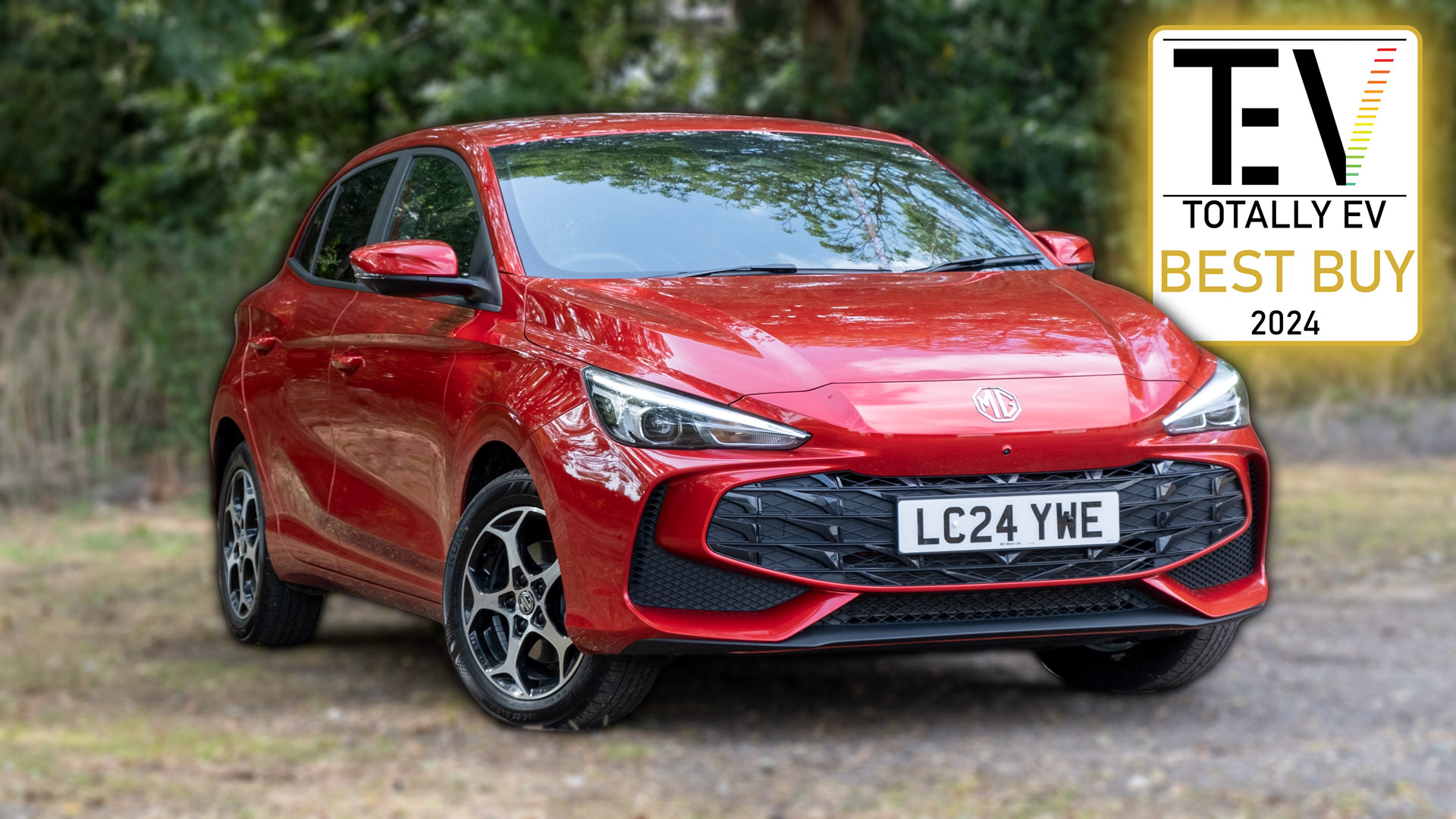The MG3 has been around since 2008, but its design was inspired by the Rover 25, which dates back to 1999. Now in its third generation, SAIC Motor, the Chinese automaker, is offering the MG3 with a hybrid powertrain for the first time. Another novelty is that it’s also being sold in the EU, whereas the older generation models were solely sold in the UK for the European market.
If you’d prefer to watch a review of the MG3 Hybrid+, head on over to our YouTube channel.
MG3 Hybrid+ price & competition
At the time of writing and in the UK, the MG3 is solely available with the Hybrid+ powertrain. It’s touted that the petrol-only model, which is available in other markets, will be available at a later date. As such, there are two available trims: SE at £18,495 and Trophy at £20,495 – making it one of the cheapest hybrids on the market. A seven-year or 80,000 mile transferable warranty comes as standard on all trims. A breakdown of the differences can be found below (click to expand):
Find the best MG3 Hybrid+ deals
To put the MG3’s price into perspective, here are a few hybrids to consider: the Honda Jazz from £26,885, the Vauxhall Astra Hybrid from £30,035, the Seat Leon e-Hybrid from £34,305, the Honda Civic from £35,005, the Audi A3 TFSIe from £36,975, the VW Golf MK8 GTE from £40,300, the Skoda Superb Estate iV SE from £41,465, and the Mercedes A 250 e from £41,370.
You might also want to consider a fully electric vehicle: the MG4 EV from £26,995; Fiat 500 Electric from £28,195; Nissan Leaf from £28,495; Mini Electric from £31,550; Renault Zoe from £31,195; Smart #1 from £31,950; GWM Ora 03 from £31,995; Peugeot e-208 from £32,650; Vauxhall Corsa-e from £33,730; MG4 EV XPower from £36,495; Cupra Born from £36,475; VW ID.3 from £37,255; Tesla Model 3 from £39,990; Polestar 2 from £44,950; BYD Seal from £45,695; Hyundai Ioniq 6 from £47,040; and the BMW i4 from £50,755.
Read next: New MG HS review: An affordable plug-in hybrid
MG3 Hybrid+ exterior review
Despite its affordable price, the new MG3 Hybrid+ really looks the part. From the front, it’s similar to the MG4 EV, which in itself gives a few supercars a run for their money. From the side, there are body-coloured wheel arches and sideskirts, and 16″ alloys that come fitted as standard across the trim range. At the back, there’s a stylish design that completes the vehicle’s design. It’s worth noting that only in the Trophy trim, will you find a rear privacy glass.
For your colour options, ‘Arctic White’ comes as standard. ‘Black Pearl’, ‘Hampstead Grey’, ‘Monument Silver’ and ‘Battersea Blue’ cost an additional £545 while the pictured ‘Dynamic Red’ costs £695. When it comes to towing capacity, the vehicle is rated at 500kg for braked and unbraked trailers.
Read next: Honda Civic review: Best hybrid car on the market
MG3 Hybrid+ interior review
Inside, the MG might not be able to compete with more premium alternatives but it certainly does look the part. However, the materials used within the cabin are cheap, with the plastic trim around the dashboard sometimes creaking when traversing on uneven terrain.
It’s also rather bizarre that the instrument cluster is lopsided and slightly angled towards the window, away from the driver. The same could be said about the central locking buttons, which can be found to the right of the steering wheel; while only a small observation to make, the yellow light that’s illuminated when the vehicle is locked reflects on the driver’s window, which can be distracting at night.
Another issue is that all the climate controls have been moved to the infotainment system, which might not come as much of a surprise given the recent trend from manufacturers, but as the infotainment itself is a little sluggish, it is rather cumbersome to adjust the climate while on the move.
To make it a bit more convenient to access the climate controls, MG has provided a few physical shortcut buttons below the 10.25″ display. With that said the shortcut button in question doesn’t seem to work if Android Auto or Apple CarPlay are being used. Speaking of which, both systems are supported over a wired connection only. It would have been nice to see wireless capabilities but hopefully, this alongside other optimisations can be added at a later date via a software update.
Equally, it would have been nice to see turn-based navigation data from Android Auto and Apple CarPlay fed through to the fully digitalized and somewhat customisable 7″ instrument cluster. Given the MG3’s asking price, it’s no surprise to learn that a Head-Up Display (HUD) isn’t available as an option.
There’s also no upgrade available to the six-speaker 30-Watt audio system. This might come as a disappointment to audiophiles as the configuration is a bit lacklustre across the frequency range. Nonetheless, it’ll suffice for the average listener. If you’d like to hear how it sounds, watch our detailed review on YouTube.
MG3 Hybrid+ storage review
Despite the glove box being relatively compact, the new MG3 feels surprisingly spacious within the cabin, at least for a compact car. At the front of the centre console, there’s an area for a smartphone, a USB Type-A and Type-C port and a 12V socket. Further down, there are two cupholders with a removable plastic insert, and you’ve also got a customisable and retractable area by the armrest.
As for the door bins, the front two will accommodate a 500ml bottle alongside small-sized valuables, while the rear two are a bit more limited. It’s a shame that none of them are lined in fabric.
As for the boot, there’s 293 litres with the seats in place and with them dropped down this figure extends up to 983 litres.
Here’s how it compares to a few of its electrified rivals: BMW i4 (470/1,290 litres); Nissan Leaf (435/1,161 litres); Tesla Model 3 (425/1,235 litres); Honda Civic Hybrid (409/1,187 litres); VW ID.3/Cupra Born (385/1,267 litres); Vauxhall Astra Hybrid (352/1,268 litres); MG4 EV (363/1,177 litres); Polestar 2 (405/1,095 litres); Renault Zoe (338/1,225 litres); Honda Jazz (304/1,205 litres); Seat Leon e-Hybrid and Audi A3 TFSI e (280/1,110 litres); Vauxhall Corsa-e (267/1,076 litres); GWM Ora 03 (228/858 litres); Fiat 500 Electric (185/550 litres).
In terms of practicality, you’ve got a hatchback design and a small underfloor compartment for your tyre repair kit. However, there is a raised boot lip and a step between the rear portion of the rear seats and the boot floor, which means it’s not flat. While these issues are excusable, it’s truly surprising to see the entire second-row dropdown. Indeed, there are no rear split-folding seats like you’d find on almost every new vehicle, which means if you have to transport large luggage, a few cabin bags and two passengers, you’ll have to use another vehicle. A real oversight by the manufacturer.
It’s also awkward to bring the seats down as you have to release both latches almost simultaneously from within the cabin; when you want to put them back, the seatbelts get in the way as there are no runners.
Read next: Honda Jazz review: Best compact hybrid?
MG3 Hybrid+ comfort review
With the omission of rear split-folding seats, it should come as no surprise to learn that there are no cupholders nor a dropdown armrest at the back of the cabin. Thankfully, however, both headroom and legroom at the front and rear are good – 6-foot 2-inches (188cm) individuals won’t feel henned in, which is impressive for a vehicle of its size. It’s also nice to see that the rear footwell design has been optimised with the hump of the transmission tunnel kept down to a minimum.
Find the best MG3 Hybrid+ deals
As for the seats themselves, they’re all accommodating and soft. The driver’s seat has 6-way manual controls, while the passenger has 4-way controls instead. In the Trophy spec, you’ll find the front two seats and the steering wheel are also heated.
When it comes to cabin noise, the MG3 Hybrid+ is competent at blocking out exterior noise. However, there is still some road noise that creeps in from the tyres at higher speeds, and with the runners missing altogether at the rear of the cabin, the seatbelt clips vibrate off the plastic trim, which leads to unwanted vibrations. As such, you might want to engage the rear seatbelts or purchase an additional accessory to avoid that phenomenon from occurring each time you traverse bumpier terrain.
Read next: Vauxhall Astra review: Is the hybrid worth it?
MG3 Hybrid+ performance review
With that in mind, MG’s compact car is comfortable to drive thanks to its soft suspension setup. Granted, it’s not going to compete with much more expensive alternatives that use an adaptive system, but for a vehicle of its price and class, it’s quite comfortable to drive in and around town.
Unsurprisingly, this affects the vehicle’s driving dynamics as when it’s chucked around winding country roads, the MG3 Hybrid+ see-saws around due to body roll. There’s also a lack of connection with the front axle, making the vehicle hard to trust on those more spirited drives.
With that said, it’s still blisteringly quick for a compact car. Under the bonnet, you have a four-cylinder 1.5-litre petrol engine that outputs 75 kW of power (100 hp) and 128 Nm of torque. This then works with an electric motor, which outputs 100 kW (134 hp) and 250 Nm to output a combined 143 kW of power (192 hp) and a claimed 425 Nm of torque that helps drive the front wheels. Using Racelogic’s Performance Box Touch, we clocked in 0-20mph in 2.14s, 0-30mph in 3.22s, 0-60mph in 6.9s, 50-70mph in 4.1s and recorded a peak acceleration of 0.46g. It has a top speed of 106mph.
Considering the MG3 Hybrid+’s price tag and category, its ability to accelerate in a straight line is seriously impressive. However, it still isn’t what we’d call a performance vehicle, as its three-speed automatic transmission does hesitate between 60-70mph; the gear change results in a loss of torque, affecting the smoothness of power delivery. It’s almost as if the vehicle is working on a dodgy continuously variable transmission (CVT) system when it engages the gears – an odd sensation to have when you’re performing an overtaking manoeuvre on the motorway.
Buy a car phone mount on Amazon (Affiliate)
What’s more important, however, is efficiency. Here, the MG3 Hybrid+ houses a 1.83 kWh battery pack with 0.92 kWh usable. The vehicle determines what mode it should operate in, therefore it automatically switches between electric and petrol power; you won’t hear or feel the difference but can see it in action by glancing down at the instrument cluster. To expand, here are the different driving modes:
- EV: Running on electric-only power for as long as the charge allows.
- Series: Engine runs through to the generator, which powers the electric motor to drive.
- Series and Charge: Series driving plus topping up the battery when under low-load.
- Drive and Charge – Engine drives the wheels while also charging the battery through the generator.
- Parallel: Both engine and electric motor power the wheels.
The automaker claims you’ll be able to attain 64 MPG, while in our mixed driving tests, we netted 55-60 MPG. Not only is this impressive as it’s close to the manufacturer’s claim but it also competes with far more expensive vehicles on the market.
For context, here’s how it compares to the other hybrids that we’ve tested: the Citroen C5 X Hybrid and Peugeot 408 Hybrid attained 70-75 MPG, the Cupra Formentor e-Hybrid 64 MPG, the VW Passat Estate GTE 60-65 MPG, Kia Sportage PHEV 60-65 MPG, the Audi A3 TFSI e 58.2 MPG, the Citroen C5 Aircross Hybrid 58 MPG, the Suzuki Across Hybrid 55-61 MPG, the Honda Civic, Seat Leon e-Hybrid, Skoda Octavia iV Estate and Honda HR-V 55 MPG, the Vauxhall Astra Hybrid 53.8 MPG, the Honda Jazz 51 MPG, the Nissan Qashqai e-Power 50-53 MPG, the MG HS PHEV 40-45 MPG, the Hyundai Tucson PHEV 42.7 MPG, the Nissan X-Trail 42.6 MPG, the Range Rover Evoque P300e 40 MPG, the BMW X2 xDrive 25e 39 MPG, the Nissan Juke Hybrid 35-40 MPG, the Jeep Renegade 4xe 36 MPG, and the Land Rover Discovery Sport P300e 35 MPG.
As you’ll be able to note, the MG3 Hybrid+ is comparable to and better than some of its rivals, such as the Audi A3 TFSI e, the Honda Civic, the Seat Leon e-Hybrid, the Vauxhall Astra Hybrid, and the Honda Jazz. In fact, one could even throw the compact SUVs into the mix such as the Honda HR-V and the Nissan Juke Hybrid.
It is worth pointing out that the majority of the aforementioned vehicles are plug-in hybrids, as opposed to the self-charging system that’s used in the MG3 Hybrid+; so should you be doing shorter journeys and regularly plugging in, the PHEVs would be the better option given you can recharge overnight at a cheaper rate – effectively reducing the need to refuel and thus making the MPG figures a little redundant.
However, what’s even more impressive is that the MG3 has three regenerative braking modes: level 1, 2 and 3. The latter is the harshest and provides the most amount of deceleration when you lift off the accelerator pedal. It’s great to finally see a self-charging hybrid with multiple regenerative braking modes, as most only have one mode or none whatsoever. You can adjust the regenerative braking level through the infotainment system, or by assigning the star button located on the steering wheel to adjust said setting. Note, no matter the last-used setting, the vehicle will always start with Level 2 mode.
Read next: Audi A3 TFSI e review: A sporty plug-in hybrid
MG3 Hybrid+ safety review
When it comes to crash safety, the new MG3 Hybrid+ has yet to be tested by Euro NCAP. So, we can’t provide you with any crash analysis. However, we can talk about the driver assistance systems; there are a plethora of them that come fitted as standard: Adaptive Cruise Control, Active Emergency Braking with Pedestrian and Bicycle Detection, Lane Keep Assist (LKA) with Lane Departure Warning System (LDWS), Traffic Jam Assist, Intelligent Speed Limit Assist, Driver Attention Alert, Forward Collision Warning and Traffic Jam Assist.
In the Trophy spec, you also get Rear Cross Traffic Alert and Blind Zone Detection with Lane Change Assist.
In our tests, we found that Adaptive Cruise Control was a little jerky, with the MG3 failing to smoothly regulate the distance to the leading vehicle. As for Lane Keep Assist (LKA) with Lane Departure Warning System (LDWS), we found it to be a little hit-and-miss, with the vehicle sometimes failing to intervene. Intelligent Speed Limit Assist is rather intrusive as there’s an audible bong that occurs as soon as you exceed the speed limit. Of course, one shouldn’t go faster than the legal limit, however, on country roads the vehicle would sometimes fail to pick up the national speed limit of 60mph and rather would think it sits at 20-30mph. You can disable the feature but you’ll have to faff around with the infotainment system, which can be rather cumbersome as it gets reenabled each time you power on the vehicle.
In terms of parking, visibility at the front, side and rear are all excellent; a rear wiper comes included too. There are rear sensors and camera that come fitted as standard, and the vehicle has a tight 10.5-metre turning circle. Should you want 360-degree cameras, you’ll need to opt for the Trophy trim. The resolution and therefore quality of the cameras isn’t great but they’ll suffice to see your surroundings.
It’s also worth pointing out that in the Trrophy trim you have the “Steering with peace of mind” option, which effectively shows your blind spot on the infotainment system by using the side-mounted cameras. While a useful safety feature, the sluggishness of the infotainment system lets it down as it can take a few extra seconds for the camera system to display; making it a bit redundant at times and annoying as it takes a while before reverting to the previous screen.
Read next: New Honda HR-V review: Best hybrid SUV?
TotallyEV’s verdict on the MG3 Hybrid+
The MG3 Hybrid+ is far from perfect, with questionable build quality within the cabin, sluggish integration of technology and the entire second row dropping down making it impractical in certain scenarios.
That being said, it’s hard to ignore its fuel efficiency, stylish design, spacious interior, comfortable driving experience, straight-line performance and of course, its affordable price tag, which undercuts all of its main competitors. As a result, it receives TotallyEV’s Best Buy award.
Find the best MG3 Hybrid+ deals
What do you make of the MG3 Hybrid+? Let us know in the comments section below or via social media; we’re on: YouTube, Instagram, Facebook, X and LinkedIn.

